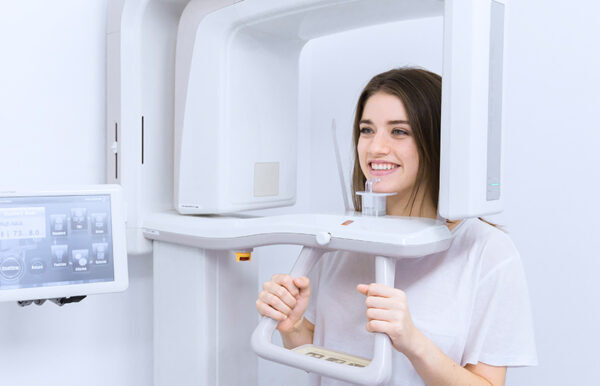Understanding CBCT Technology
In the world of dental care, cutting-edge technology has significantly enhanced the quality of diagnostics and treatment. One standout innovation is Cone Beam Computed Tomography (CBCT). This state-of-the-art imaging technology has transformed both clinical practice and patient experiences. Let’s explore what CBCT machines are and how they can elevate your dental practice.
What Are CBCT Machines?
CBCT machines are specialized X-ray devices that generate three-dimensional images of the teeth, soft tissues, nerve pathways, and bones in a single scan. Unlike traditional two-dimensional X-rays that provide limited perspectives, CBCT offers a comprehensive view, enabling more precise diagnosis and treatment planning. The machine resembles a typical X-ray setup but has the unique ability to rotate around the patient, capturing data from various angles. This data is then compiled into a detailed 3D image, offering a versatile tool for numerous dental applications.
The Essential Role of CBCT in Modern Dental Practices
Integrating a CBCT machine into your dental practice is not just advantageous—it’s becoming increasingly essential. The technology brings significant efficiency gains, allowing for faster and more accurate diagnoses. The detailed 3D images provide immediate visualization of complex structures, reducing the time needed for both diagnosis and treatment planning. This efficiency translates to fewer patient visits and a more streamlined process, benefiting both practitioners and patients.
Whether you’re preparing for oral surgery, planning dental implants, assessing orthodontic needs, or diagnosing conditions like TMJ disorders, a CBCT machine offers unparalleled precision. This advanced technology also helps set your practice apart. In an era where patients are well-informed and selective about their healthcare choices, offering state-of-the-art equipment like CBCT can make your practice more attractive to potential clients.
Benefits for Patients
The advantages of CBCT technology extend beyond dental professionals to the patients themselves. One immediate benefit is reduced radiation exposure. CBCT scans are quicker and often require less radiation compared to traditional X-rays, enhancing patient safety.
Moreover, the high level of detail in CBCT imaging leads to more accurate diagnoses, resulting in more effective treatment plans. For patients, this means better outcomes and potentially less invasive procedures. For instance, if a patient presents with a toothache that traditional X-rays can’t clearly diagnose, a CBCT scan can pinpoint the issue more precisely, allowing for a more targeted treatment approach. This precision can save patients from unnecessary discomfort, costs, and additional procedures.
The comprehensive views provided by CBCT scans are invaluable in various dental scenarios. For example, in dental implant cases, these detailed images help in accurately placing the implants, ensuring long-term success. For more complex procedures, such as corrective jaw surgery, 3D scans enable surgeons to plan with a high degree of accuracy, improving the predictability of outcomes.
Having the capability to perform these scans in-office adds a layer of convenience and comfort for patients. It eliminates the need for referrals to external imaging centers, allowing patients to receive comprehensive care in a familiar environment with trusted professionals.
Key CBCT Imaging Terms
Axial View:
An axial image slice is parallel to the ground when a person is standing or sitting. This top-down view is particularly useful for examining the positions of teeth and roots, making it essential for many dental evaluations.
Coronal View:
A coronal slice divides the body into front and back halves. In dentistry, this view is critical for assessing tooth and jaw alignment and planning surgeries like wisdom tooth extractions.
Sagittal View:
The sagittal plane divides the body into left and right halves. In CBCT imaging, this side-to-side perspective is invaluable for orthodontic planning and assessing the depth of dental structures.
Addressing Radiation Concerns with CBCT
Concerns about radiation exposure are common with any form of X-ray imaging, including CBCT. However, CBCT machines generally expose patients to less radiation than traditional dental X-rays, often providing better image quality. It’s essential to communicate this clearly and honestly to patients.
Explain that CBCT scans are not routine but are used for specific cases where detailed imaging is crucial for accurate diagnosis and treatment planning. This helps alleviate concerns about unnecessary radiation exposure. Additionally, contextualizing the level of radiation—comparing it to everyday activities like air travel—can help patients understand and feel more comfortable with the procedure.
Investing in CBCT Machines: A Strategic Decision for Your Practice
Acquiring a CBCT machine is a significant investment, both financially and operationally, for any dental practice. It’s important to research thoroughly and consider all factors before making this decision. Once integrated, a CBCT machine can significantly enhance the quality of care you provide, making it a valuable addition to your practice.
Conclusion
Incorporating CBCT technology into your dental practice is a transformative step that enhances diagnostic accuracy, treatment planning, and overall patient care. The advanced imaging capabilities of CBCT machines offer unparalleled precision, enabling dentists to provide more effective and efficient treatments. Patients benefit from reduced radiation exposure, quicker and more accurate diagnoses, and the convenience of comprehensive in-office imaging. As dental care continues to evolve, staying at the forefront of technology with tools like CBCT not only improves patient outcomes but also positions your practice as a leader in modern dentistry. Investing in a CBCT machine is more than just a purchase—it’s a commitment to offering the highest standard of care.
